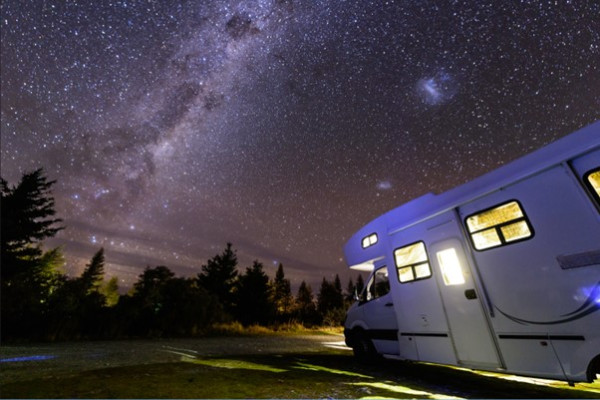Standard of the month - Keeping people safe with transportable connections and AS/NZS 3001
Safe transportable structures connected to electrical installations begins with AS/NZS 3001: parts 1 and 2 – our standard of the month.

A motorhome utilising a connectable electrical installation.
AS/NZS 3001:2022 Electrical installations - Connectable electrical installations and supply arrangements was updated in 2022 and split into two parts – part 1 for site supplies for connectable electrical installations and part 2 for connectable electrical installations. We’re acknowledging the role of both together as our Standard of the Month.
AS/NZS 3001 provides qualified electricians and inspectors with normative requirements (steps to meet compliance) and informative elements for electrical installations associated with transportable structures and vehicles that are intended for connection to low-voltage a.c. supply systems (ie. exceeding 50 V a.c. but not exceeding 1,000 V a.c.).
If it can move – 3001 applies
Transportable structure means it can be moved from one site to another, such as caravans, motorhomes and livestock carriers with accommodation, food and drink vending vehicles and trailers, relocatable homes, temporary site offices, toilets or other facilities, non-occupation display units such as electronic scoreboards and advertising signs, and mobile medical connectable installations. For any electrical installation applied to a fixed unit, AS/NZS 3000 applies.
Provision for diverse applications
There is guidance on aerial, catenary and underground wiring systems, and service pillars, connection to batteries and when installed with gas equipment and in damp areas. Provision is made for earthing differences in New Zealand and Australian users.
Ordinarily the standard plays a vital role in ensuring the safe use of electrical installations for outdoor events and public areas, golf courses and sporting grounds, and caravans parks and camping grounds. One other crucial use is for emergency setups. The standard can be referred to when establishing civil defence shelters where connection to a temporary electrical supply needs to be safe and effective – something that is most pertinent following the devastating weather events this season.
Available to registered electricians
Qualified and registered electricians within New Zealand can access the standard through the Electrical Workers Registration Board (EWRB)’s standards access subscription. No installations should be done without oversight of a suitably competent person.
Thank you to those who represented New Zealand on the EL-001 committee from EWRB, Electrical Safety New Zealand, Engineering New Zealand, Master Electricians NZ, and WorkSafe New Zealand, whose contribution of knowledge and experience is helping to maintain good practice.
